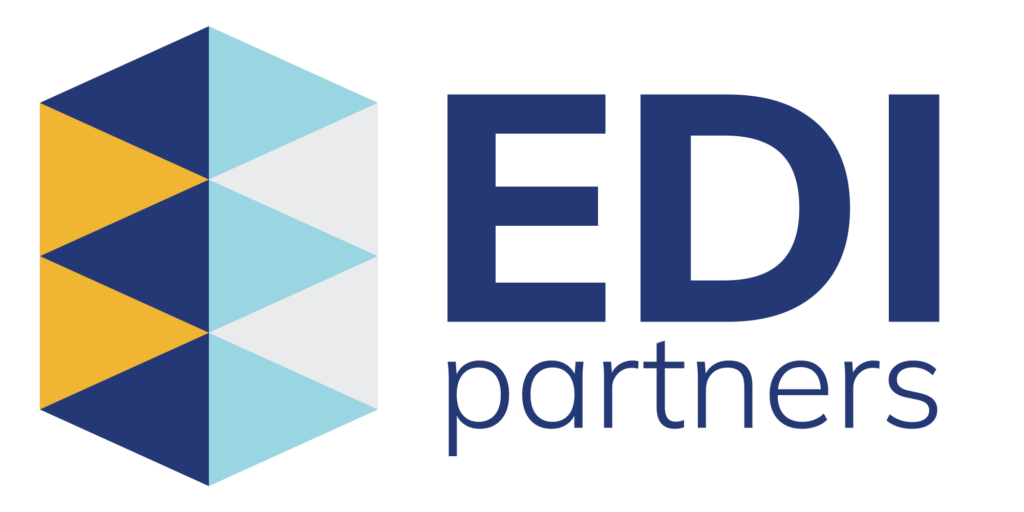These technologies enable real-time data exchange between computer systems both within the organization and with external partners, and play a vital role in the overall supply chain management process.
Naturally, you might be wondering which one is better for your business. There’s a constant debate around this topic among professionals and some think EDI will be phased out. That has obviously not happened. There are also instances where these terms are thought to be the same. Yet the two systems are different enough to warrant an explanation.
Before we dive into the EDI vs. API discussion, let’s take a refresher on what these technologies are and how they help organizations improve their communication and data-sharing capabilities.
What Is EDI?
Electronic Data Interchange (EDI) is a method of electronically exchanging business documents, such as purchase orders, invoices, and shipping notices, between trading partners. This allows businesses to automate and streamline their processes, reducing the need for manual data entry and paper-based transactions. EDI is widely used across various industries and can benefit businesses of all sizes.
To use EDI, the sender creates an electronic document using their internal software or that of an EDI service provider. The document is then formatted according to a specific EDI standard (like ANSI X2 or EDIFACT) and transmitted to the recipient’s computer system through a secure communication channel. This data transmission is performed using the HTTP protocol.
Upon receiving the document, the recipient’s computer system translates the document using software into a format that can be read by the recipient’s internal systems. The data can then be automatically processed, without manual work. Once the recipient has processed the document, they may respond with their own electronic documents, such as an invoice or shipping notice, and the process is repeated in reverse.
What is an API?
An API, or Application Programming Interface, is a set of instructions, tools, and standards for building software applications. An API provides a way for different software systems to communicate with each other, allowing developers to create new applications that are built on top of existing systems.
APIs provide a standard way for developers to access the functionality of another system, without having to understand all the underlying programming details. APIs allow developers to request data or perform actions from another system or database, and receive a response in a format that can be easily understood and integrated into their own software application.
APIs work by defining a set of rules for how different software systems can interact with each other. An API needs endpoints or URLs that can be accessed to retrieve data or perform required actions.
When a user wants to use an API system, they will typically send a request to the API endpoint, specifying the data they want to retrieve or the action they want to perform. The API will then process the request and send a response back to the user. The data is sent in a format such as JSON or XML.
APIs are widely used to integrate different software systems, allowing them to share data and functionality. For example, an e-commerce platform might use an API system to retrieve shipping rates from a logistics provider, or a social media platform might use it to display user information from a third-party service.
There are different types of APIs, but when we compare them to EDI, we will refer to web-based APIs that are used by internet browsers or web servers.
EDI vs. API: Understanding the Differences
As you can see, EDI and API are two connectivity solutions that enable companies to exchange data electronically and automate business processes. Contrary to popular belief, EDI and API can also work together and complement each other. However, they have distinct differences between the two technologies in terms of functionality and use cases.
Function: Document Exchange vs. Information Retrieval
EDI is a standardized format that is focused on document exchange for businesses. EDI is a purely commercial system that favors batch processing for pre-defined message structures and protocols to ensure compatibility between different systems. EDI is also designed for large volumes of data intended to be sent through a single channel.
APIs, on the other hand, allow applications to communicate with each other in real time and request information from a database. The requester needs to send a specific request to the API to retrieve the desired information. Therefore, APIs can be used by multiple users to connect to a single point. The data retrieved can be used to prepare a document or report.
Standardization: Industrial Cooperation vs. Proprietary Code
Another difference between EDI and API is the way standardizing processes work. EDI solutions are tailored for businesses in a specific industry. The standards are maintained by an industry-specific agency or trade consortium. EDI helps businesses conform to industry-wide practices, facilitating interoperability and data exchange. Many standards like GS1 or UN/EDIFACT also have regional options available to users.
In contrast, APIs do not need to be standardized, since the main goal is to hide the underlying code. APIs give all users access to the same information, instead. They do allow some flexibility in using the information. You will need to rely on skilled developers and information specialists to make optimal customization for your organization possible with API. But you will have to rely on a third-party proprietor to maintain the information stream. In other words, you do not have full control over all the information an API provides.
Security: Secure Channel vs. Open Connection
Since the data processed for EDI comprises documents that need to be stored in a specific location, this connection is arranged directly between the trading partners. It also denotes the distinction between a system that is safe and in compliance with industry standards and one that is not. In addition, APIs do not require a secure channel and rely on cloud-computing technologies. These solutions may not be compliant with industry standards.
Cost Models: Data Usage vs. Document Requests
Putting aside the hardware investment, there is free EDI software available for small businesses or startups. But if you need to scale up your business and need a robust EDI system, you will need to pay for additional features and support. These features can include a secure value-added network, which may cost you per kilobyte of data used.
APIs may also be used for non-commercial purposes, but they can be scaled up for high data volumes. Keep in mind that commercial APIs always come at a premium. However, there are no hardware costs that need to be incurred other than a user’s computer system. The API fee is paid directly for a connection. API costing is based on pull requests which are used to create a single document.
Advantages of EDI
Here are a few reasons why EDI is useful:
- Industry-level compliance
- Secure information exchange
- Easier onboarding of trading partners
- Standardized document creation and processing
Disadvantages of EDI
Here are the downsides of EDI you should know about:
- Free options are limited
- Requires regular updates to maintain industry compliance
- Requires significant hardware investments, especially for multi-channel trading
Advantages of APIs
Here are some benefits of an API solution:
- Real-time data processing
- High level of customization and flexibility
- No immediate hardware requirements
- Faster to set up
Disadvantages of APIs
Here are the downsides of an API solution:
- No control over information quality or security
- Requires skilled developers to fully utilize
- May not guarantee industry compliance
- Data layer creation can make onboarding of trading partners difficult
Which Solution is the Best for Your Business?
Every business has its unique needs and requirements that warrant dedicated solutions. However, if you are considering building partnerships on an industrial scale, the right solution will depend on the availability and deployment of certain features.
The first thing you need to consider is the set of solutions that your trading partners use. After all, you would want to be able to effectively process documents and transactions between all stakeholders involved.
Many businesses today are using standardized and almost identical documents tailored for regular business transactions. There is also a strong case for legacy systems in use today for simplicity. In short, many companies use documents that work with EDI, and it is here to stay.
The real question here is: should you process EDI documents in-house, or do you need to ask someone else to manage your EDI? If you have the technical expertise to work on in-house processing, and privacy is important, then the first option is a clear choice.
There are situations where you do need to speed up your integration processes. This is where solutions like iPaaS (integration platform as a service) come in handy. iPaaS services provide APIs for businesses to connect over the cloud, allowing them to quickly create documents at scale for their customers.
As a bonus, many recent startups are working to provide a user-friendly interface for non-tech-savvy entrepreneurs. If you think EDI is too complex, and need to get to market fast, an API might work better for your company.
Finding the Right Balance Between EDI and API for Your Business
Electronic Data Interchange and Application Programming Interface are two different technologies that are widely used to facilitate communication between software systems today. While EDI has been around for several decades, API has emerged as a more modern approach to integration. To choose between EDI and API, you should consider the specific needs of your business and the systems you are using, as well as those of your external business partners.
For some developers, expressing their opinion that APIs will soon replace EDI has become a ritual. In reality, businesses need both EDI and APIs for streamlining their documentation and business processes, and communicating effectively with all stakeholders. Companies are increasingly becoming reliant on cloud-based solutions that offer scalability and flexibility.
The use of APIs increases functionality and expands the context of business-to-business integrations. At the same time, with improved user interfaces to increase usability, EDI users can get better visibility into their data, improving decision-making and overall business performance.
These trends will continue as businesses increasingly adopt EDI solutions to improve their operations. Headquartered in Richmond, Virginia, EDI Partners services customers in all industry verticals across the United States to help them maximize the value of EDI. For nearly 30 years, we have helped organizations grow through seamless, end-to-end management of their EDI operations.
- What is EDIFACT? A Beginner’s Guide to the Global EDI Standard - September 18, 2025
- Top Challenges of EDI Interface Integration and How to Overcome Them - September 18, 2025
- AI‑Driven EDI: How Artificial Intelligence Is Transforming EDI Consulting in 2025 - August 21, 2025

